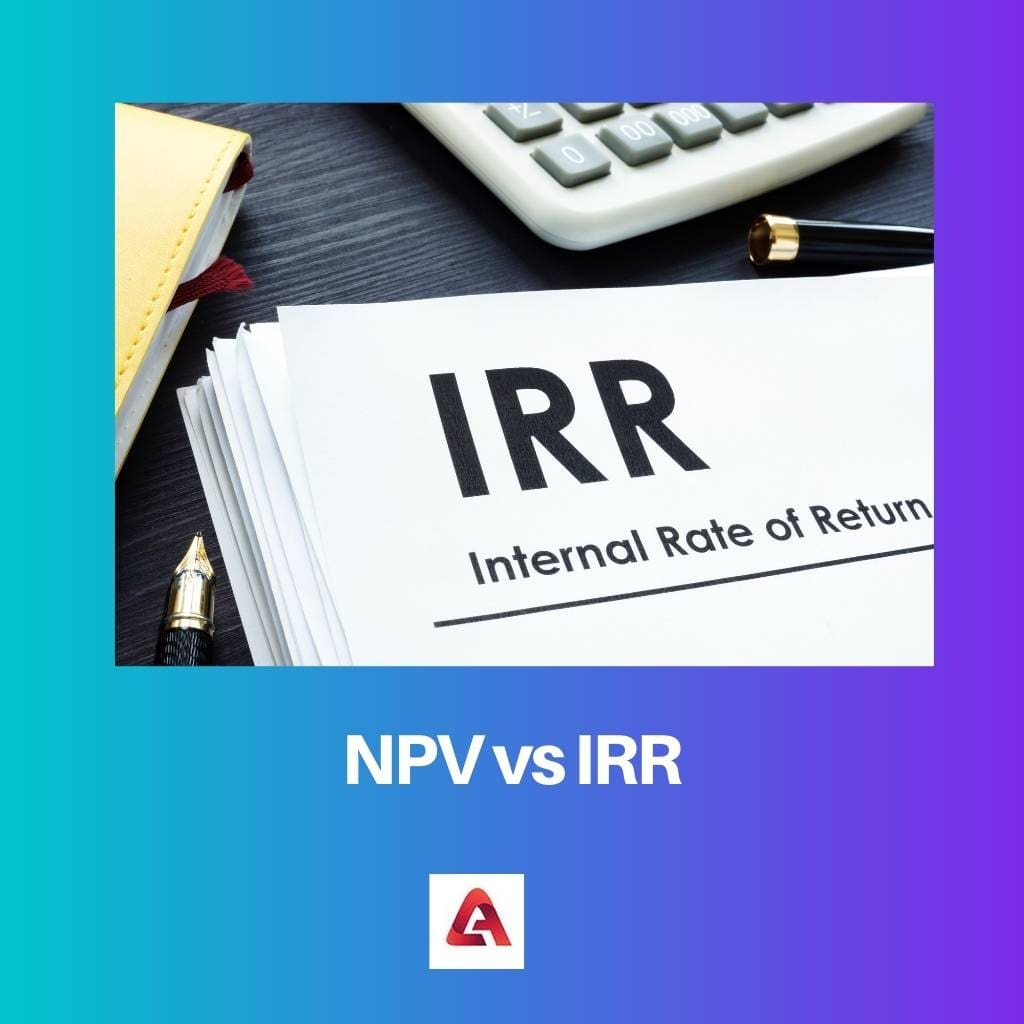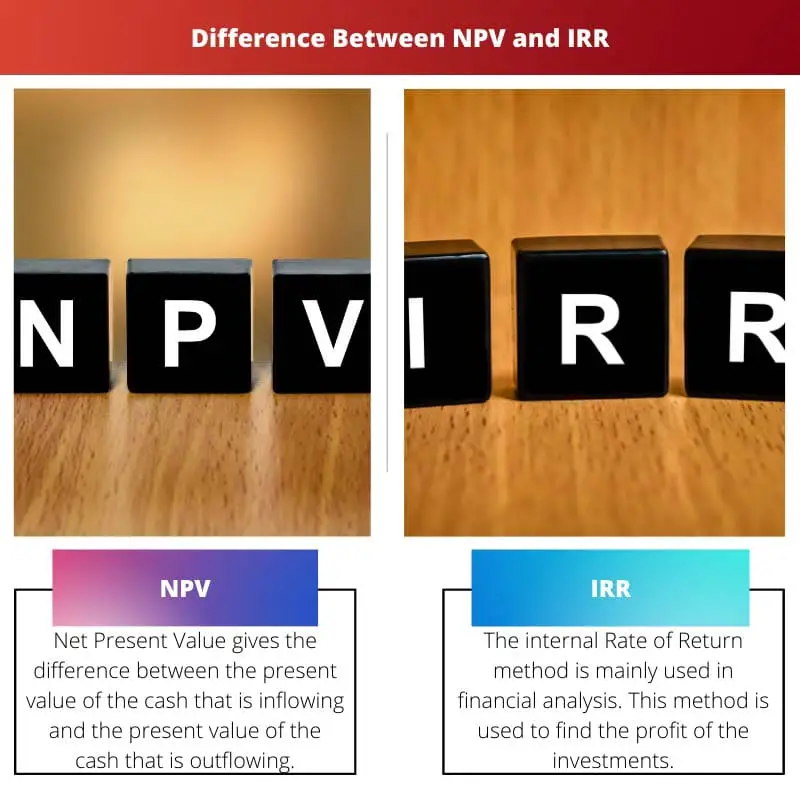Calculating the cash discount and its inflows and outflows is important for a company. It is specially taken care of when the company takes on some new projects. The company will be in a dilemma to find which method suits them the best for them.
NPV and IRR are used for finding discounted cash and are preferred depending on the problem.
Key Takeaways
- NPV (Net Present Value) evaluates the profitability of a project by calculating the present value of all cash flows, highlighting overall value creation.
- IRR (Internal Rate of Return) measures a project’s profitability by finding the discount rate at which the NPV becomes zero, indicating the break-even point.
- Both methods are used for investment appraisal, but NPV is more reliable in the case of non-conventional cash flows, while IRR might result in multiple or no solutions.
NPV vs IRR
NPV (Net Present Value) is a financial measure that calculates the present value of expected future cash flows from an investment. IRR (Internal Rate of Return) is another metric used to evaluate the profitability of an investment. The higher the IRR, the more profitable the investment can be.

There is a method to calculate net present value. For that, you have to estimate the cash flows of the future period, and then you have to determine the discounted rate.
This method is totally used to calculate the present or current value that comes as a future payment. This method uses the cost capital as the discounted rate.
IRR is mainly used for new projects that are taken by the company. They don’t want to take risks. So, they prefer the method over any other method. In order to make this method simpler, it will be calculated as the discounted cash inflows will be equated to discounted cash outflows.
Comparison Table
| Parameters of Comparison | NPV | IRR |
|---|---|---|
| Expansion | Net Profit Value | Internal Rate of Return |
| Can be expressed in | It can be expressed in absolute terms. | It can be expressed in percentage terms. |
| Decision-making status | Decisions can be made easily. | It will be of no use in decision-making. |
| Definition | Values of the cash flow in and out. | The rate at which the cash inflows will be equated with the cash outflows. |
| Advantages | It takes care of the investment size. | The rate of return is not required in this method. |
What is NPV?
Net Present Value gives the difference between the present value of the cash that is inflowing and the present value of the cash that is outflowing. This kind of method is used in capital budgeting and investment planning.
This is mainly used to analyze the project profitability or the amount that is invested in that project. It is used to find the value of the payments of future streams. If the net present value of the project invested is positive, then the cash that comes out of this will be positive and as well as attractive.
There is a formula to calculate net present value. One formula comes with the summation, and the other can be easily done without any summation. In business, the organization thinks of some plans to expand.
In that case, net present value is one of the effective and considered methods for expansion.
Net Present Value has many advantages, such as it takes the value of money and the time we invest, Comprehensive Tool, and Value of Investment. But there are certain limitations to using the net present value method.
They are Discounting Rates, and Different Projects are not Comparable, and Multiple Assumptions. If you are very confused about calculating net present value, you can also use the in-built clear taxes Calculator for NPV.

What is IRR?
The internal Rate of Return method is mainly used in financial analysis. This method is used to find the profit of the investments. The internal Rate of Return also uses the same formula that is used for net present value.
In net present value, it is kept as zero. But here, it is not kept as zero. It is somehow connected with one another as both deal with cash inflows and cash outflows. If we have a higher amount of internal rate of return, it will get good for the investment. It is used in various types of investments.
It is considered one of the best investment options when compared with other investment options in the market. We can even calculate the Internal Rate of Return in Excel.
Because in Excel, you don’t have to worry about the formula. It will do all kinds of work for you. You just have to enter the details and use the formula to arrive at the answer.
The internal Rate of the Method is the discount rate at which the net present value becomes zero. The primary goal of the Internal Rate of Return is to find the discount. There are several methods to do that, but the internal rate of return is one of the preferred methods for that.

Main Differences Between NPV and IRR
- The purpose of the NPV is to find the profit that is gained from the project. On the other hand, the purpose of the IRR is to determine either the profit or loss.
- The cash flows will be immediately reinvested at the cut-off rate in the NPV method, while the investment will be made at that time of the IRR method.
- If the time flows or any other discrepancy occurs, the cash flow of the internal rate of return will become negative, or there will be a lot of confusion. But that won’t happen in the NPV.
- When we invest more money initially, the profit will be high in NPV. But on the IRR, the profit will become higher or lower irrespective of the amount of money we invested.
- Due to the investment differences, most companies prefer the internal rate of return method.






